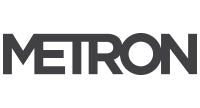
"Hearing protection device (HPD) use has the potential to provide adequate protection against high noise exposure, but only in cases where workers consistently wear HPDs during their entire exposure to high levels of noise.” This bit of simple logic is backed up by empirical evidence.
We recently had reason to find the first research study ever conducted to examine the effectiveness of hearing protection device use by construction workers. The results, released in 2004 by the University of Washington’s Department of Environmental and Occupational Health Sciences, were later published in the Journal of Occupational and Environmental Hygiene.
- A group of 393 apprentices in Washington from 9 different trades – ranging from carpentry to cement masonry – were studied over a period of 5 years.
- Using the National Institute for Occupational Safety and Health (NIOSH) Recommended Exposure Limit for measurement, the researchers found that high noise exposure - exceeding 85 decibels (dBA) - occurred on the job site during 70% of shifts.
- Out of the 6,000 work hours during which noise exposure levels were measured, nearly one-third of the monitored minutes exceeded 85 dBA.
- However, workers were found to only wear HPDs such as earplugs and earmuffs less than 20% of the time that high noise exposure levels were found and only 16% of the overall work time that was monitored.
- As a direct result of the low overall usage of HPDs, “less than one in five overexposed shifts was brought below 85 dBA by HPDs.”
- Operating engineers and sheet metal workers were found to be the most adept at wearing HPDs when exposed to high levels of noise; their high HPD use times resulted in average HPD-adjusted exposure levels under 85 dBA.
- Based on this data, the research study’s authors, Seixas and Neitzel, recommended:
- Providing additional training and guidance on the selection, use, and proper fit of hearing protection devices for construction and trade workers.
- Displaying adequate signage around areas where HPDs are required.
- Providing a selection of free hearing protection devices – at least one ear muff and one ear plug solution – to all workers who will encounter noise levels exceeding 85 dBA.
Fight Instinct With Widely Available and Easily Accessible Hearing Protection Devices
We wish this whole concept was so obvious it didn't need to be studied. Luckily, scientists will continue to determine where our challenges lie in keeping workers safe from long term, on-the-job harm. Check out our line of hearing protection dispensing stations, ear plugs, and ear muffs to help workers on your job sites overcome their worst instincts.
Source Links
- Department of Environmental and Occupational Health Sciences from the School of Public Health and Community Medicine at the University of Washington | Noise Exposure and Hearing Protection Use Among Construction Workers in Washington State
- Image source: Moldex Metric Catalog Scan
![banner-bottom]()









